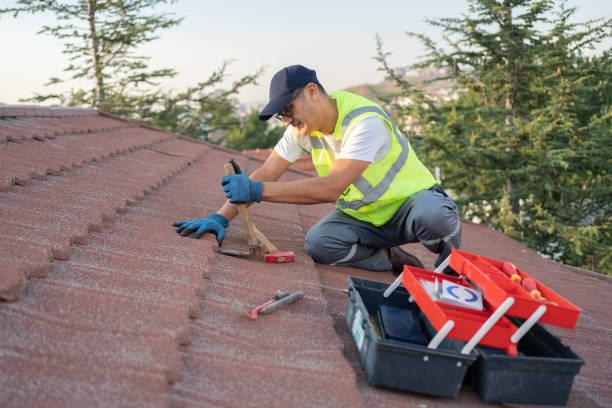Roof Maintenance Checklist: 11 Essential Tasks for Lasting Protection

Roof maintenance is a crucial aspect of homeownership, ensuring that your property remains protected from leaks, water damage, and structural issues. Regular maintenance not only extends the life of your roof but also saves money by preventing costly repairs. A well-maintained roof improves energy efficiency, enhances curb appeal, and safeguards your family’s comfort and safety. Knowing what to inspect and how to address minor issues early can prevent extensive damage. Experienced homeowners and contractors alike recommend a systematic approach to roof upkeep.
For more detailed guidance, you should also check out the guide on the roof inspection checklist for step-by-step instructions.
11 Essential Tasks for Long-Lasting Protection
1. Inspect Shingles and Tiles
The first step in roof maintenance is examining shingles or tiles for damage, such as cracks, curling, or missing pieces. Damaged shingles can lead to leaks and compromise the roof’s protective layer. Replacing or repairing damaged sections promptly ensures long-term durability.
2. Check Flashing Around Roof Penetrations
Flashing around chimneys, vents, and skylights is prone to corrosion or gaps. Damaged flashing allows water to seep under shingles, causing leaks. Inspect flashing annually and reseal or replace it as needed.
3. Clean Gutters and Downspouts
Clogged gutters can lead to water pooling on your roof, accelerating damage. Removing leaves, debris, and blockages ensures proper drainage and reduces the risk of leaks or structural issues.
4. Inspect Roof Valleys
Roof valleys are critical areas where two slopes meet and direct water off the roof. Debris buildup or damage in valleys can create water infiltration points. Keep valleys clear and repair any signs of wear.
5. Examine the Roof Deck
Inspecting the roof deck involves checking for sagging, rot, or moisture damage beneath shingles. A compromised deck affects the roof’s stability and requires immediate attention to prevent extensive structural issues.
6. Inspect Attic Ventilation
Proper attic ventilation prevents heat and moisture buildup, which can damage shingles and reduce energy efficiency. Ensure vents are unobstructed and functional. Poor ventilation may lead to mold growth or ice dams in colder climates.
7. Check for Signs of Water Damage
Look for water stains, mold, or mildew on ceilings and walls. Early detection of water intrusion allows homeowners to address leaks before significant damage occurs.
8. Inspect Roof Edges and Eaves
Roof edges and eaves are susceptible to wind damage and water infiltration. Check for rotting wood, missing shingles, or damaged fascia boards and make repairs promptly to protect the roof’s perimeter.
9. Trim Overhanging Branches
Tree branches can scrape shingles, drop debris, or cause physical damage during storms. Regularly trim branches near your roof to prevent unnecessary wear and tear.
10. Remove Moss and Algae
Moss and algae growth can trap moisture, accelerating roof deterioration. Clean affected areas using appropriate solutions or professional services to maintain the roof’s integrity.
11. Schedule Professional Roof Inspections
Even with diligent DIY maintenance, professional roof inspections are essential. Experts can identify hidden problems and provide corrective measures to extend the roof’s life. Following a professional inspection schedule ensures that minor issues don’t escalate into costly repairs.
Benefits of a Regular Roof Maintenance Routine
Maintaining your roof systematically increases its lifespan, improves energy efficiency, and safeguards your home against leaks, mold, and structural damage. A proactive maintenance schedule also enhances property value and minimizes unexpected repair costs. Experienced contractors like Monte Vista Construction emphasize the value of combining DIY care with periodic professional inspections for optimal protection.
FAQs
1. How often should I inspect my roof?
A roof should be inspected at least twice a year, ideally in spring and fall, and after severe storms.
2. Can I maintain my roof myself, or do I need a professional?
Minor tasks like cleaning gutters and inspecting shingles can be DIY, but structural issues or hidden damage require professional expertise.
3. What is the most common cause of roof damage?
Common causes include water infiltration, poor ventilation, storm damage, and debris accumulation.
4. How can I prevent moss and algae on my roof?
Trim trees, clean gutters, and treat affected areas with appropriate solutions to prevent moss and algae growth.
5. Why is attic ventilation important for roof longevity?
Proper ventilation prevents moisture and heat buildup, reducing the risk of shingle damage, mold, and ice dams.
- Art
- Causes
- Crafts
- Dance
- Drinks
- Film
- Fitness
- Food
- Jogos
- Gardening
- Health
- Início
- Literature
- Music
- Networking
- Outro
- Party
- Religion
- Shopping
- Sports
- Theater
- Wellness


